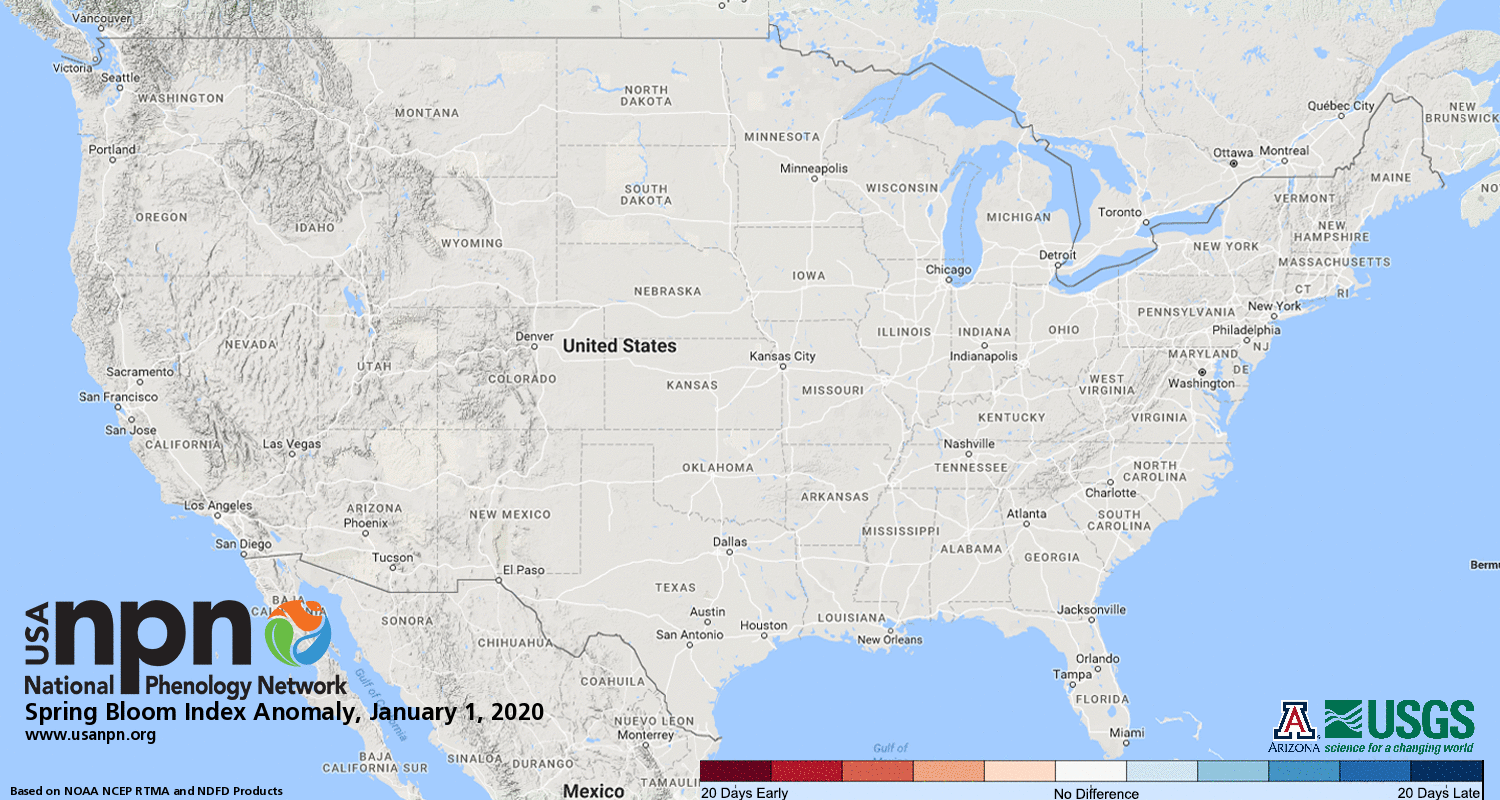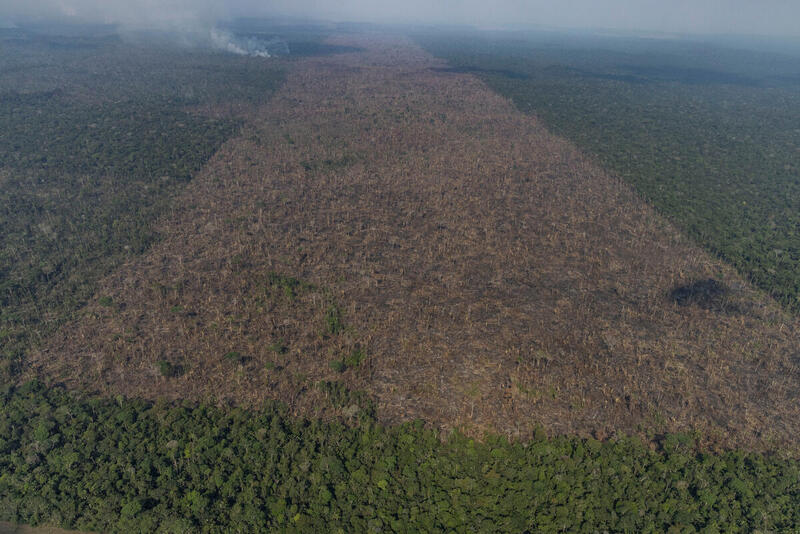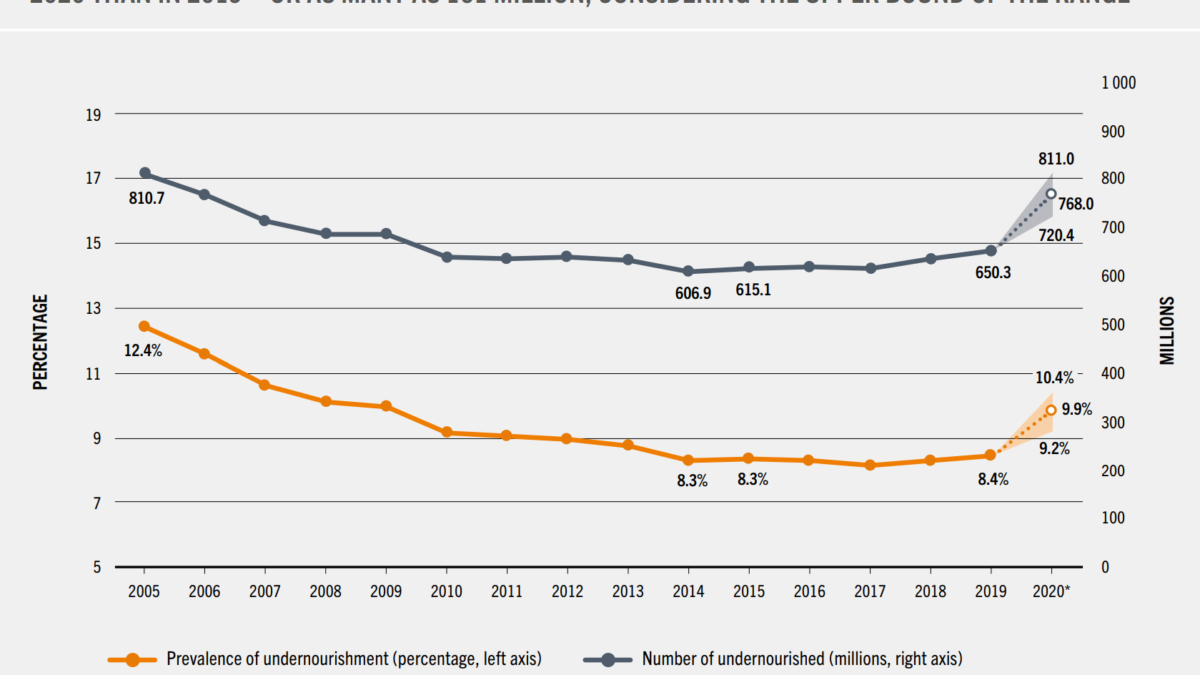Spring 2020 in southern U.S. arrives earlier than ever recorded, adding to climate trend

By Cassidy Randall
6 March 2020
(The Guardian) – Across the south-eastern US, trees are unfurling their clouds of leaves after winter. Yet this picturesque and usually welcome development is this year cause for consternation.
New data from the USA National Phenology Network (USA-NPN) shows that in parts of North Carolina, South Carolina and northern Florida, spring has arrived more than three weeks earlier than average, and earlier than at any point in the last 39 years it has been tracked.
The south-eastern US has historically experienced a large amount of variability in the onset of spring, so it is hard to say the climate crisis is directly responsible. Yet this year’s premature spring is part of a trend of rising temperatures and early leaf emergence that scientists have observed in recent years.
Phenologists – who study seasonal phenomena in the natural world – calculate the start of spring based on observations of “leaf-outs” (the appearance of tiny leaves on trees), blooms for species active in early spring (such as lilac and honeysuckle) and weather events and temperature conditions. The Extended Spring Indices have been used as an indicator of climate change by the US Environmental Protection Agency and the National Climate Assessment.
A 2016 study by the National Park Service found that of the 276 parks studied, three-quarters are experiencing the impacts of an early onset of spring, and half of the parks are experiencing an “extreme” early onset, as compared to historical averages. This 2020 early spring is currently affecting such beloved parks as Congaree in South Carolina and parts of Great Smoky Mountains on the border of Tennessee and North Carolina. [more]
Spring arrives earlier than ever recorded in southern US – adding to climate trend

Status of Spring 2020
3 March 2020 (NPN) – Spring leaf out continues to spread up the middle of the country, three weeks earlier than a long-term average (1981-2010) in some locations. Washington, DC and New York City are 24 days early. Philadelphia, PA is 16 days early and Little Rock, AR is 9 days early.
Spring leaf out has also arrived in parts of the West. Spring leaf out is on time to 2 days late in San Diego, LA, and San Francisco, CA and 10 days early in Portland, OR and Seattle, WA. Parts of northern Texas and Oklahoma are on time to one week late.
Spring bloom has also arrived in several Southeast and Southwest states. Spring bloom is between 1 day and 3 weeks early.
Check back on this page throughout the spring for updates on when spring arrived and whether spring was early or late for your location.
Download static maps of Spring Leaf Out and Spring Bloom.
Download the maps in KML/KMZ and other formats via our Geoserver Request Builder Tool.

How Often Do We See a Spring This Early or Late?
In places where spring has sprung, how typical is this year’s spring? Darker colors represent springs that are unusually early or late in the long-term record. Gray indicates an average spring.
In parts of the Southeast, this year’s spring is the earliest in the 39-year record (dark green). [more]


